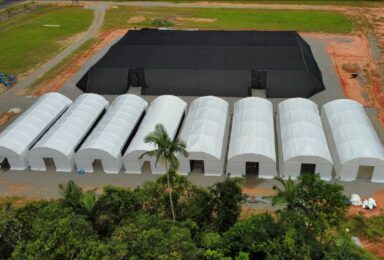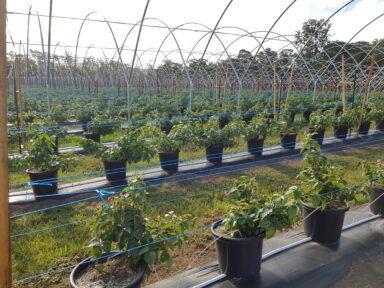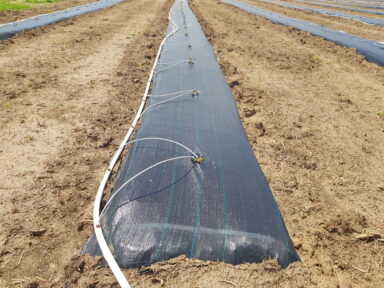Do Greenhouses Stay Warm in the Winter?
July 18, 2023
Greenhouses have long been favored by gardeners and horticulturists for their ability to create a controlled environment that supports plant growth throughout the year.
One of the primary benefits of greenhouses is their capacity to trap heat, leading to warmer temperatures compared to the outside environment. However, the question remains: Do greenhouses stay warm in the winter?
In this blog post, we will delve into the science behind winter greenhouse gardening and discover the strategies gardeners employ to keep their green havens cozy even in the coldest months.
How Greenhouses Work
The Greenhouse Effect
At the heart of a greenhouse’s warmth lies the greenhouse effect. The transparent covering of the greenhouse, typically made of glass or plastic, allows sunlight to penetrate inside. As sunlight strikes the surfaces within the greenhouse, it is absorbed and re-emitted as infrared radiation.
However, unlike sunlight, which can easily pass through the transparent cover, infrared radiation has a harder time escaping the greenhouse, resulting in trapped heat that warms the interior.
Insulation in Greenhouses
To enhance heat retention, greenhouse designers utilize various insulation materials. These materials help create a barrier that reduces heat loss through conduction. Additionally, thermal mass plays a crucial role in stabilizing temperatures within the greenhouse.
Materials like water barrels and stone or concrete flooring act as thermal mass, absorbing heat during the day and releasing it during colder nights.
Greenhouse Design Considerations
- Orientation and placement: The orientation and placement of a greenhouse can significantly impact its ability to stay warm during winter. Locating the greenhouse where it receives the maximum sunlight exposure throughout the day can help maintain higher temperatures.
- Insulation: As discussed, insulation is key for keeping temperatures up during the winter. A combination of insulation materials, such as rigid foam panels, straw bales and bubble wraps, are often used to create a layer of insulation against external temperatures.
- Ventilation: Ventilation helps keep fresh air circulating in the greenhouse while also dissipating excess heat or moisture. Installing vents or fans that open and close automatically in response to temperatures can help regulate temperature levels and prevent heat loss during cold nights.
Additionally, the installation of proper ventilation systems allows for temperature control, preventing overheating on sunny days and excess cooling during frigid nights.
Winter Climate Challenges for Greenhouses
While greenhouses are designed to retain heat effectively, they still face several challenges during the winter months.
1) External Temperature Fluctuations
Outside temperatures can plummet during winter nights, and without adequate insulation and heat-retaining strategies, the internal temperatures of greenhouses can drop significantly as well.
2) Reduced Sunlight Hours and Intensity
Winter days are shorter, resulting in fewer hours of sunlight. Moreover, the angle of sunlight is lower during winter, reducing its intensity. These factors can affect the overall heat gain within the greenhouse.
3) The Impact of Snow and Frost
Snow accumulation on the greenhouse roof can reduce sunlight penetration, and frost on the transparent covering can hinder the greenhouse effect, further cooling the interior.
Strategies to Keep Greenhouses Warm in Winter
To combat the challenges of winter, gardeners employ various strategies to maintain cozy temperatures inside the greenhouse.
- Choosing the Right Greenhouse Location: Selecting an ideal location for the greenhouse is crucial. South-facing sites receive the most sunlight, making them the preferred orientation for maximum solar gain.
- Insulating the Greenhouse Structure: Using appropriate insulation materials for the walls and roof of the greenhouse helps minimize heat loss and keeps the interior warm.
- Selecting Cold-Hardy Plant Varieties: Opting for cold-resistant plant varieties ensures that the crops can withstand lower temperatures and continue to grow healthily throughout winter.
- Using Heating Systems: In colder regions, gardeners often use heating systems to supplement the natural heat retention of the greenhouse.
-
- Gas and Electric Heaters: Gas and electric heaters are commonly used for winter greenhouse heating, providing reliable warmth.
- Radiant Floor Heating: Radiant floor heating is another effective method to distribute heat evenly throughout the greenhouse, keeping plants and the surrounding environment warm.
- Thermal Mass Utilization: Maximizing thermal mass by incorporating water barrels or stone flooring allows for better heat storage and gradual heat release, regulating temperature fluctuations.
Cold Frames and Season Extenders
In addition to traditional greenhouses, gardeners can explore the use of cold frames and season extenders to protect plants during winter.
What are Cold Frames?
Cold frames are low-profile, enclosed structures with transparent covers that serve as mini-greenhouses.
Cold frames offer protection against cold temperatures and frost, extending the growing season. However, their smaller size limits the variety and quantity of plants they can accommodate.
Row covers and hoop houses are simple, cost-effective season extenders that shield plants from harsh winter conditions.
Sustainable Heating Options
For eco-conscious gardeners, sustainable heating options offer an environmentally friendly approach to keeping greenhouses warm in winter.
- Incorporating Renewable Energy Sources: Integrating solar panels to generate electricity and solar water heaters for temperature control reduces the greenhouse’s carbon footprint.
- Geothermal Heating and Cooling: Geothermal systems utilize the constant temperature of the earth to provide a stable heating and cooling solution for greenhouses.
Winter Greenhouse Gardening Tips
To ensure successful winter greenhouse gardening, gardeners should follow these practical tips:
1) Maintaining Proper Humidity Levels
Balanced humidity levels prevent excessive moisture loss and help maintain a healthy environment for plants.
2) Monitoring and Controlling Temperature Fluctuations
Regularly monitoring the temperature and using automated systems can help maintain optimal conditions throughout the day and night.
3) Watering and Irrigation Considerations
Adjusting watering schedules during winter is essential, as plants require less water in cooler temperatures.
4) Protecting Plants from Pests in Winter
Winter is not exempt from pest challenges. Implementing preventive measures can safeguard plants from potential infestations.
Conclusion
Greenhouses are indeed capable of staying warm in the winter with the right design, location, and heating strategies. By understanding the principles of heat retention and employing suitable techniques, gardeners can create thriving winter havens for their beloved plants.
Winter greenhouse gardening offers a rewarding experience, allowing gardeners to enjoy fresh produce and vibrant blooms even amidst frosty temperatures.
At GreenLifeGRO, we offer greenhouse installation and construction services to help you protect your plants and maximize the health of your garden. Contact us today for more information about our services!





